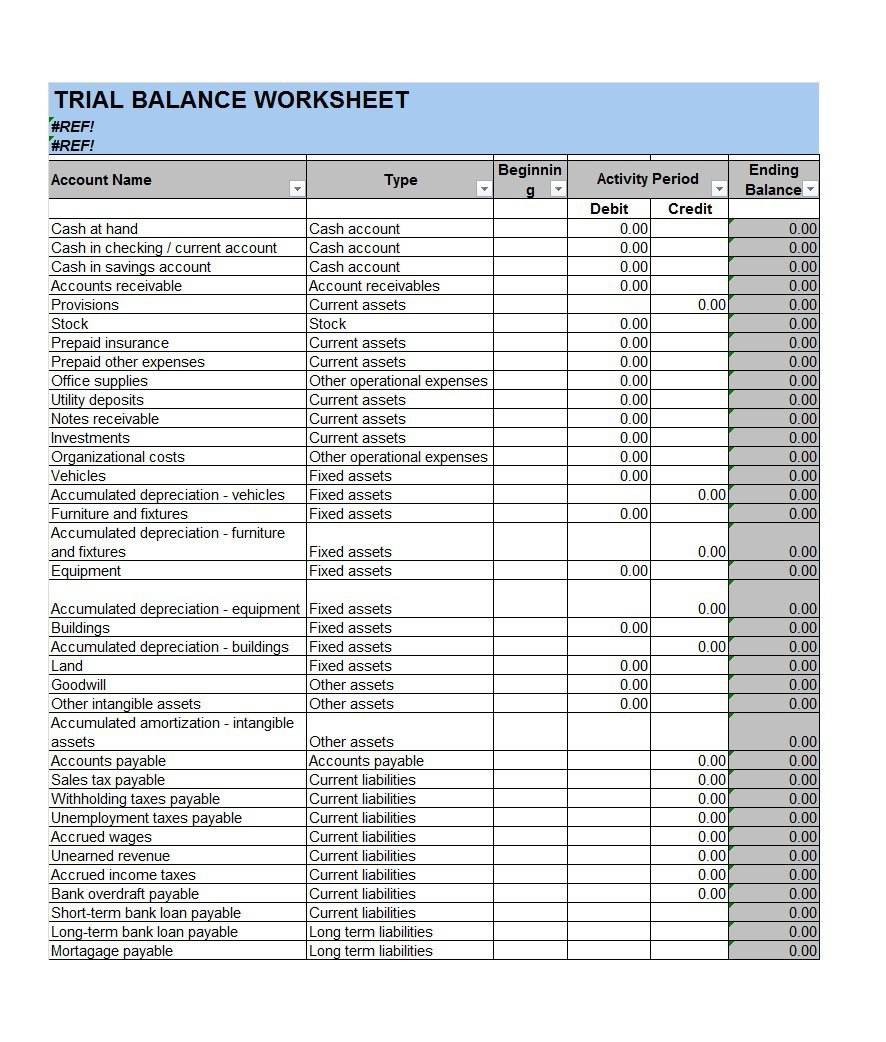
Finally, it’s worth noting that the balance sheet typically represents a company’s financial position at the end of a calendar year. However, it can also be prepared at other points in time to provide a more up-to-date snapshot of a company’s financial health. Liabilities are obligations that irs announces e 2020 a company owes to others and that must be settled in the future. They are also typically listed on the balance sheet in order of maturity, meaning the time period in which they must be paid. A balance sheet is one of the financial statements of a business that shows its financial position.

What are balance sheet accounts?
So, the balance sheet may not give you the full picture of what those assets are worth. One smart way to approach balance sheets is through comparative analysis. This means comparing a company’s current balance sheet with its past balance sheets or with those of its competitors. Assets refer to the valuable resources owned or controlled by a company with economic value. They can encompass physical items such as cash, inventory, and property, as well as intangible assets like patents or intellectual property. The balance sheet is a report that gives a basic snapshot of the company’s finances.
Everything You Need To Master Financial Modeling
This presentation starts with assets and after that, equity & liabilities are listed. The format is categorized into sections that are in descending order of liquidity, which means prioritizing items that are less liquid in nature. The data is presented from top to bottom in two columns i.e. assets and liabilities in one column and amounts in another. If necessary, her current assets could pay off her current liabilities more than three times over.
- Businesses should be wary of companies that have large discrepancies between their balance sheets and other financial statements.
- To get a complete understanding, we need to consider other factors like income statements, cash flow statements, and external market analysis.
- Vigilant monitoring of your current liabilities is crucial, as excessive debt can pose a significant financial risk to your business.
- This presentation starts with assets and after that, equity & liabilities are listed.
Great! The Financial Professional Will Get Back To You Soon.
This includes debts and other financial obligations that arise as an outcome of business transactions. Companies settle their liabilities by paying them back in cash or providing an equivalent service to the other party. A company’s balance sheet is one of the most important financial statements it produces—typically on a quarterly or even monthly basis (depending on the frequency of reporting). A company usually must provide a balance sheet to a lender in order to secure a business loan. A company must also usually provide a balance sheet to private investors when attempting to secure private equity funding. In both cases, the external party wants to assess the financial health of a company, the creditworthiness of the business, and whether the company will be able to repay its short-term debts.
Valuation of Assets
Any business that runs accounting software will have the ability to create reports within the software. Shareholders’ equity is calculated by subtracting a company’s liabilities from its assets. This shows how much of the company belongs to its shareholders or owners. This register serves as a comprehensive record, detailing all the information about each asset owned by your business.
A pro forma balance sheet makes estimates on the future effects on assets, liabilities, and net worth after applying assumptions and projections to the current performance of the company. In general ledger accounts, there are two primary types which include the balance sheet and income statement. Balance sheet accounts are permanent or real accounts and are used to organize, record, and sort transactions. Single-entry bookkeeping systems such as my free balance sheet template spreadsheet do not include the ability to track assets and liabilities, so generating one can be a little more tedious. Accounts Payable – Similar to accounts receivable, accounts payable are short-term loans, typically owed by the business from purchases made on credit from suppliers or vendors.
As you can see, the report format is a little bit easier to read and understand. A financial professional will offer guidance based on the information provided and offer a no-obligation call to better understand your situation. 11 Financial is a registered investment adviser located in Lufkin, Texas. 11 Financial may only transact business in those states in which it is registered, or qualifies for an exemption or exclusion from registration requirements.
They are divided into current assets, which can be converted to cash in one year or less; and non-current or long-term assets, which cannot. Each category consists of several smaller accounts that break down the specifics of a company’s finances. These accounts vary widely by industry, and the same terms can have different implications depending on the nature of the business. Companies might choose to use a form of balance sheet known as the common size, which shows percentages along with the numerical values.
The report can be used by business owners, investors, creditors, and shareholders. A business can prepare the balance sheet in several ways, but accounting software is the easiest. A business owner, bookkeeper, or accountant usually prepares the balance sheet. In this example the balance sheet asset information is presented in liquidity order. Lenders and creditors rely on balance sheets to assess a company’s creditworthiness.
